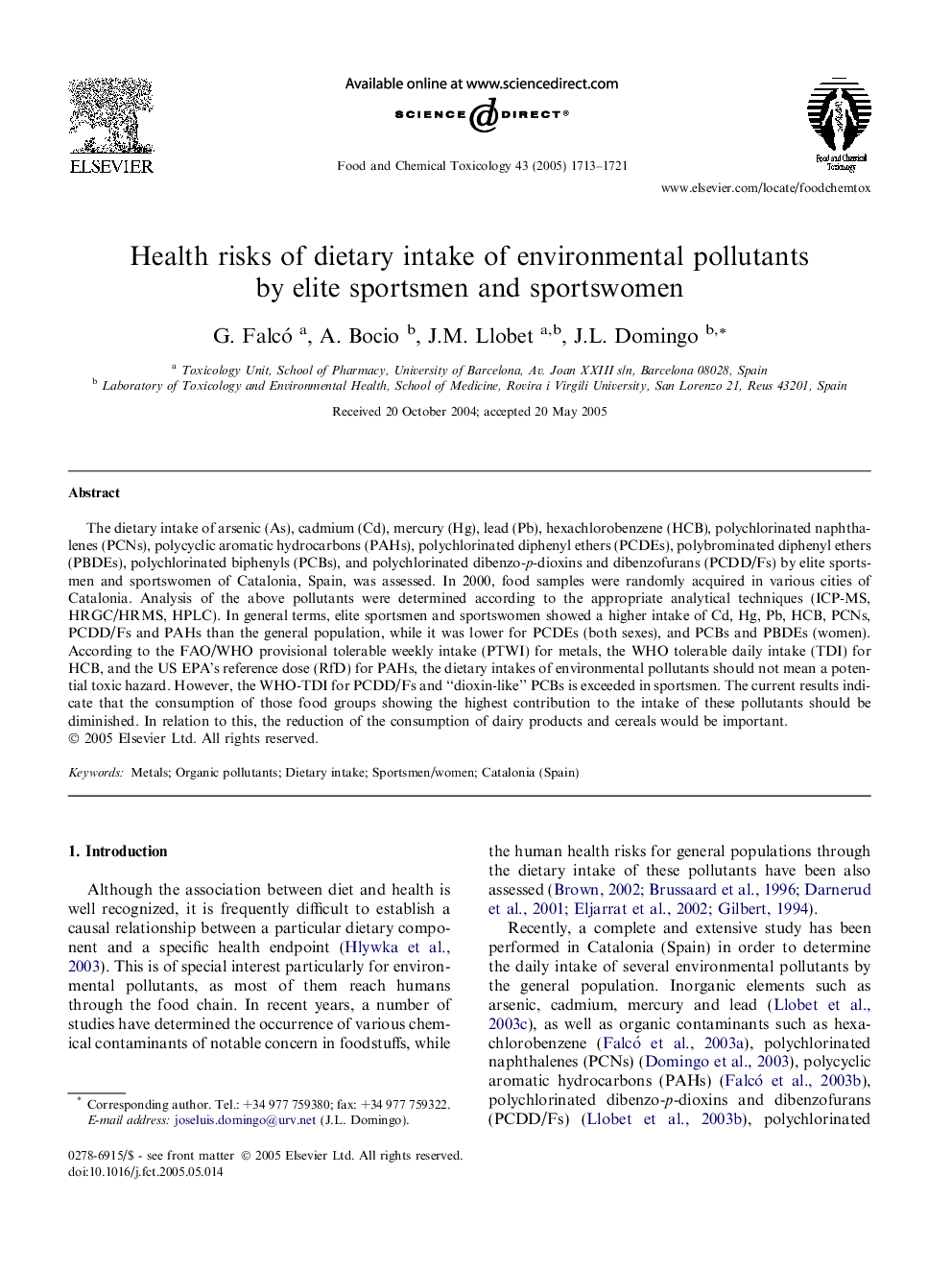| Article ID | Journal | Published Year | Pages | File Type |
|---|---|---|---|---|
| 9030591 | Food and Chemical Toxicology | 2005 | 9 Pages |
Abstract
The dietary intake of arsenic (As), cadmium (Cd), mercury (Hg), lead (Pb), hexachlorobenzene (HCB), polychlorinated naphthalenes (PCNs), polycyclic aromatic hydrocarbons (PAHs), polychlorinated diphenyl ethers (PCDEs), polybrominated diphenyl ethers (PBDEs), polychlorinated biphenyls (PCBs), and polychlorinated dibenzo-p-dioxins and dibenzofurans (PCDD/Fs) by elite sportsmen and sportswomen of Catalonia, Spain, was assessed. In 2000, food samples were randomly acquired in various cities of Catalonia. Analysis of the above pollutants were determined according to the appropriate analytical techniques (ICP-MS, HRGC/HRMS, HPLC). In general terms, elite sportsmen and sportswomen showed a higher intake of Cd, Hg, Pb, HCB, PCNs, PCDD/Fs and PAHs than the general population, while it was lower for PCDEs (both sexes), and PCBs and PBDEs (women). According to the FAO/WHO provisional tolerable weekly intake (PTWI) for metals, the WHO tolerable daily intake (TDI) for HCB, and the US EPA's reference dose (RfD) for PAHs, the dietary intakes of environmental pollutants should not mean a potential toxic hazard. However, the WHO-TDI for PCDD/Fs and “dioxin-like” PCBs is exceeded in sportsmen. The current results indicate that the consumption of those food groups showing the highest contribution to the intake of these pollutants should be diminished. In relation to this, the reduction of the consumption of dairy products and cereals would be important.
Related Topics
Life Sciences
Agricultural and Biological Sciences
Food Science
Authors
G. Falcó, A. Bocio, J.M. Llobet, J.L. Domingo,
